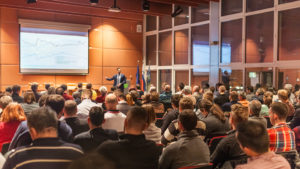1. Forceps bite-on-bite or deep-well biopsies or tunnel biopsies can sometimes establish a pathologic diagnosis of SEL.
2. Endoscopic ultrasound (EUS) is the modality of choice to evaluate indeterminate SEL of the GI track and/or if non-diagnostic tissue by forceps biopsies.
3. SEL arising from the submucosa can be sampled using tunnel biopsies (or deep-well biopsies), EUS guided fine needle aspiration (FNA), EUS guided fine needle biopsy (FNB) or advanced endoscopic techniques (unroofing or endoscopic submucosal resection).
4. SEL arising from muscularis propria should be sampled (preferably using FNB or FNA) in order to determine if the lesion is a gastrointestinal stromal tumor (GIST) or leiomyoma. Structural assessment and staining will allow differentiation of mesenchymal tumors and assessing their malignant potential.
5. Endoscopic resection techniques have been described for removal of SEL and should be limited to endoscopists skilled in advanced tissue resection techniques.
6. Management of each SEL depends on the size of the lesion, histopathology, their malignant potential and presence of symptoms.
7. SEL which have an endoscopic appearance consistent with a lipoma or pancreatic rest and normal mucosal biopsies do not need further evaluation or surveillance.
8. For SEL arising from muscularis propria which are less than 2 cm in size, surveillance using EUS should be considered.
9. Gastric GIST larger than 2 cm should be considered for resection.
10. Subepithelial lesions which are ulcerated, bleeding or causing symptoms should be considered for resection.













